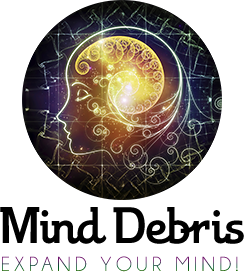DMT Research into Mental Health Issues
[Please note that this page contains affiliate links. If you choose to purchase after clicking a link, I may receive a commission at no extra cost to you.]
DMT research started a millennium ago.
Amazonian shamans have utilized Ayahuasca to heal their community’s physical, spiritual and problems.
The imaginary inducing brew contains the psychotropic known as DMT, and other compounds termed monoamine oxidase inhibitors (MAOIs).
They stop the enzymes in the human body that usually break down DMT before reaching the brain.
DMT Research into Mental Health Issues
Like other psychedelics, DMT research has shown that it communicates with serotonin receptors in the brain to elevate emotional well-being and enhance mood.
DMT has been positively used to treat mental illnesses such as anxiety, depression, and post-traumatic stress disorder (PTSD).
However, more DMT research is necessary to determine the neurobiological mechanisms causing its therapeutic effects.
Beckley/Imperial has collaborated and has promising results from their first placebo-controlled DMT study of the effects on human brain activity.
DMT Study Outline:
1) Look at DMT effects by looking at EEG recorded brain activity.
2) A look at the subjective experience of similar changes in plasma levels of DMT in real-time.
3) A detailed brain map and experience using micro-phenomenological consultations encourage chronological interpretations of individual experiences while decreasing biases typically connected to first-person trip reports.
The brain activity recorded well at the peak of the DMT experience long-established what researchers had previously witnessed with other psychedelics like LSD.
A reduction in alpha frequencies is frequencies involved in ordinary consciousness and growth in signal complexity (which indicates the waking state of consciousness, an increase from profound anesthesia, then to sleep, then back to the awakened state of consciousness).
Though, the neuronic key signature of the DMT trip encompassed a surge in theta and delta waves, which are usually contemporary during sleep, particularly when we dream.
These changes have not been shown with other entheogens like LSD and psilocybin that may replicate the comprehensive, immersive state exclusive to 5-MeO-DMT and regular DMT.
The DMT study used functional MRI scans had also been used to record the brain activity changes during the DMT experience.
The results gathered by the researchers showed that this imaging display of DMT changes the communication between brain networks and compares to previous results obtained from LSD and psilocybin studies.
Researching Ayahuasca
DMT is the psychoactive compound found within Ayahuasca.
DMT studies conducted by the Beckley/Sant Pau Research Program have shown that ayahuasca use causes an increase in crucial traits related to mindfulness, like being introspective.
Which, in turn, can help people who suffer from grief, anxiety, depression, and PTSD to help them overcome their symptoms and debilitating illnesses.
The recent brain-imaging research has discovered how Ayahuasca decreases the brain network controller, called ‘default mode network,’ and researchers have compelling evidence that this could be behind Ayahuasca’s therapeutic power.
Interestingly, scientists have also shown that certain ayahuasca compounds stimulate the birth of new brain cells from stem cells in a petri dish.
This opens up the possibility of utilizing Ayahuasca to repair damaged brain cells, which theoretically could be a potential treatment for dementia and Alzheimer’s.
DMT studies into the psychedelic and Ayahuasca show promising results to help cure mental illness, especially for those people where pharmaceuticals and modern therapies don’t work.


